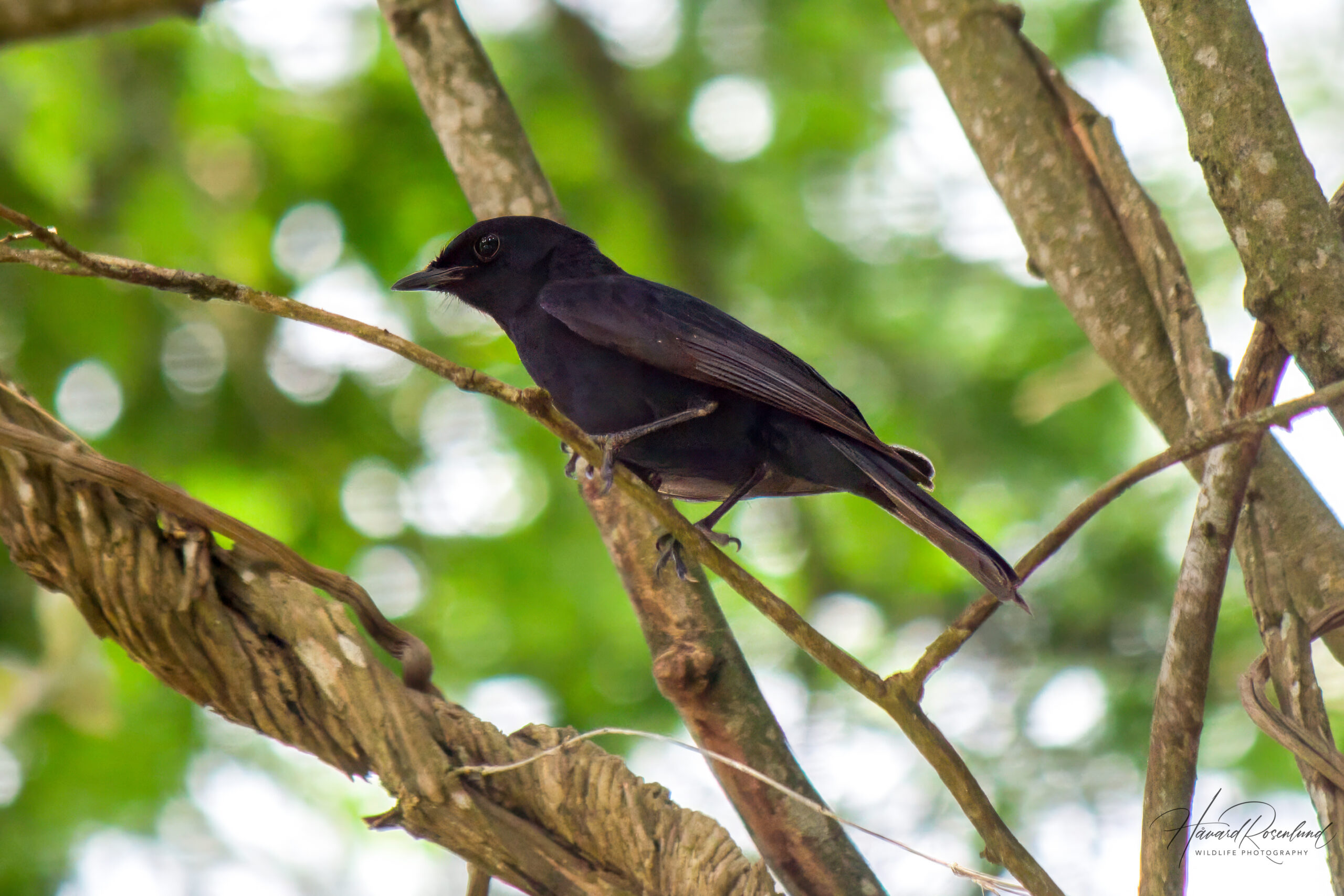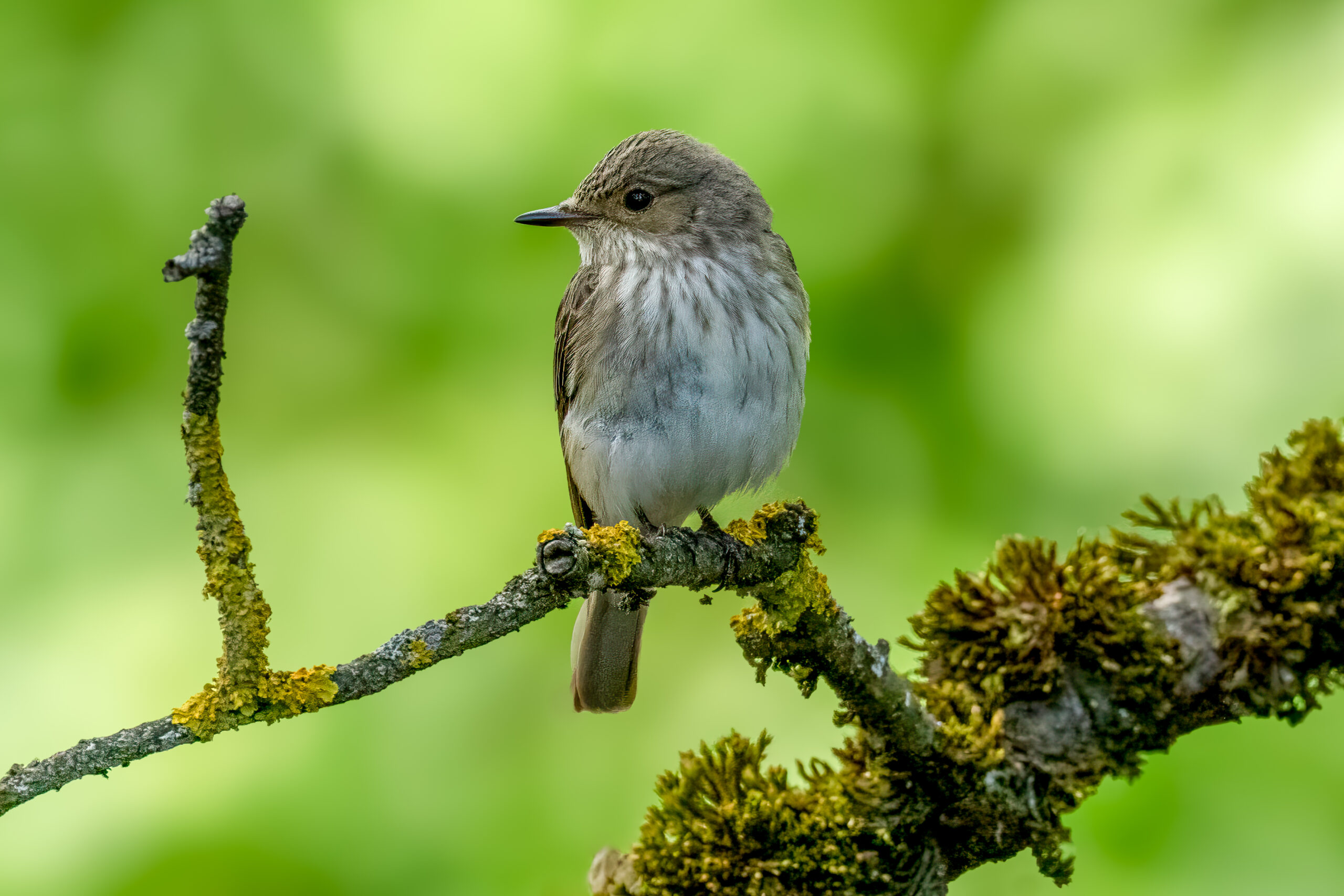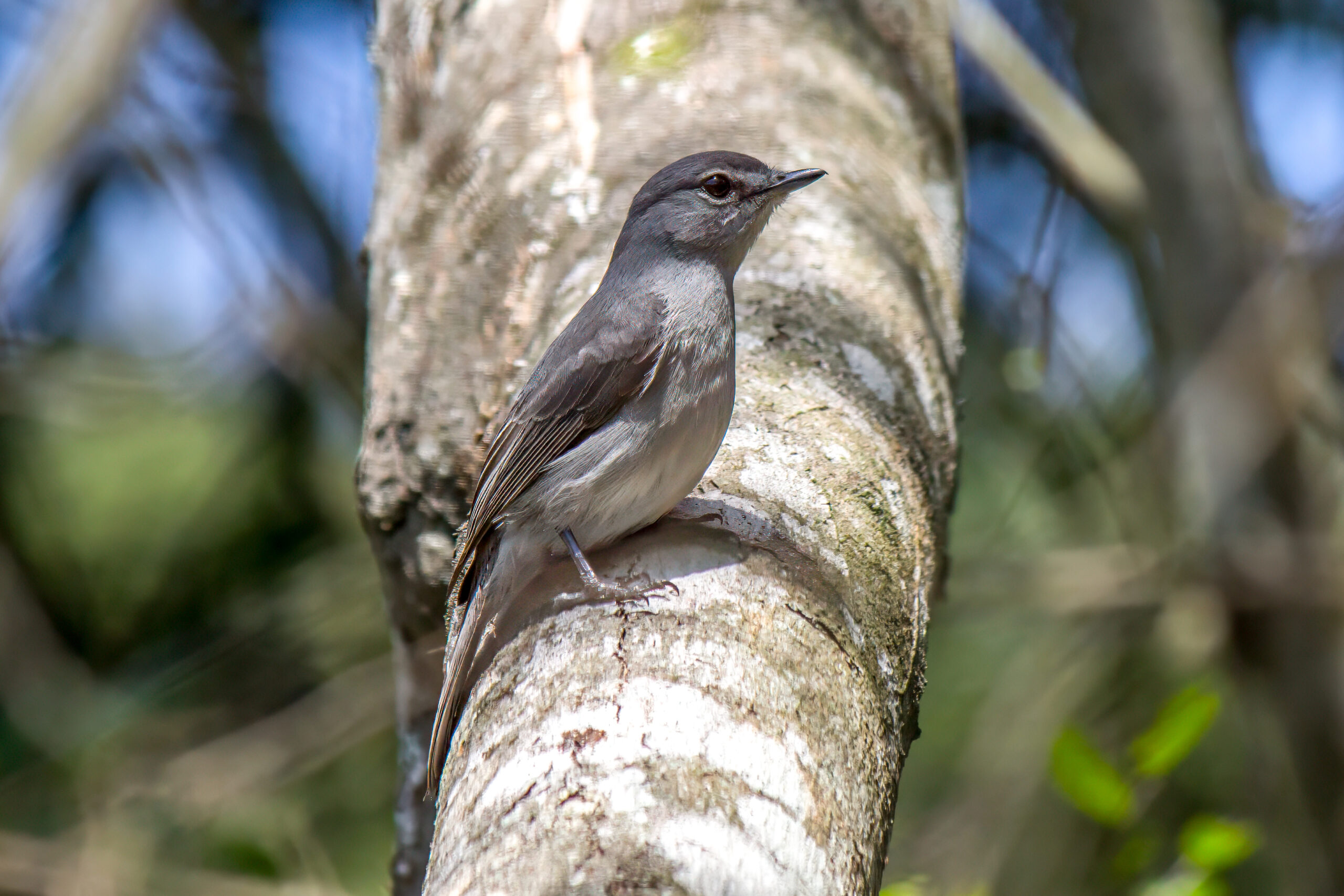Southern Black Flycatcher
(Melaenornis pammelaina)
Description
The southern black flycatcher (Melaenornis pammelaina) is a passerine bird native to sub-Saharan Africa, with a range mostly (but not entirely) south of the equator. It measures about 19-22 cm (7.5-8.7 inches) in length. The species is characterized by its predominantly black plumage, which gives it a sleek and elegant appearance. It is the only black flycatcher within its range, making it hard to confuse with other flycatchers. It can, however, be confused with species of drongo, which are all-black, but not closely related. Drongos typically have longer and more markedly forked tails and red eyes, the bill is also larger and more robust in the drongos.
Diet & habitat
The southern black flycatcher is adaptable in terms of habitat, but it shows a preference for open woodland and savanna areas. It can also be found in cultivated lands and gardens, as long as there are trees and shrubs. The species has a versatile diet, primarily consisting of insects. It catches its prey by performing agile aerial maneuvers or by foraging among leaves and branches. Sometimes, it may also consume small fruits.
Nesting
The breeding season for the southern black flycatcher varies depending on the geographical region but typically occurs during the rainy season. These birds are monogamous, with pairs often staying together for multiple breeding seasons. The female is responsible for constructing the nest, which is usually a cup-shaped structure made of twigs and grass, placed in the fork of a tree or bush. Egg-laying involves 2-3 eggs, which are incubated for about 14-15 days. Both parents participate in feeding the chicks, which fledge approximately two weeks after hatching. The fledglings, however, continue to depend on their parents for a few more weeks before becoming fully independent.
Status
At present, the southern black flycatcher faces no significant threats that could jeopardize its survival. Its wide distribution and adaptability to different habitats contribute to its stable population. It is listed as least concern on the IUCN Red List.







